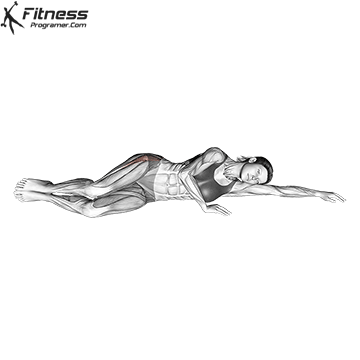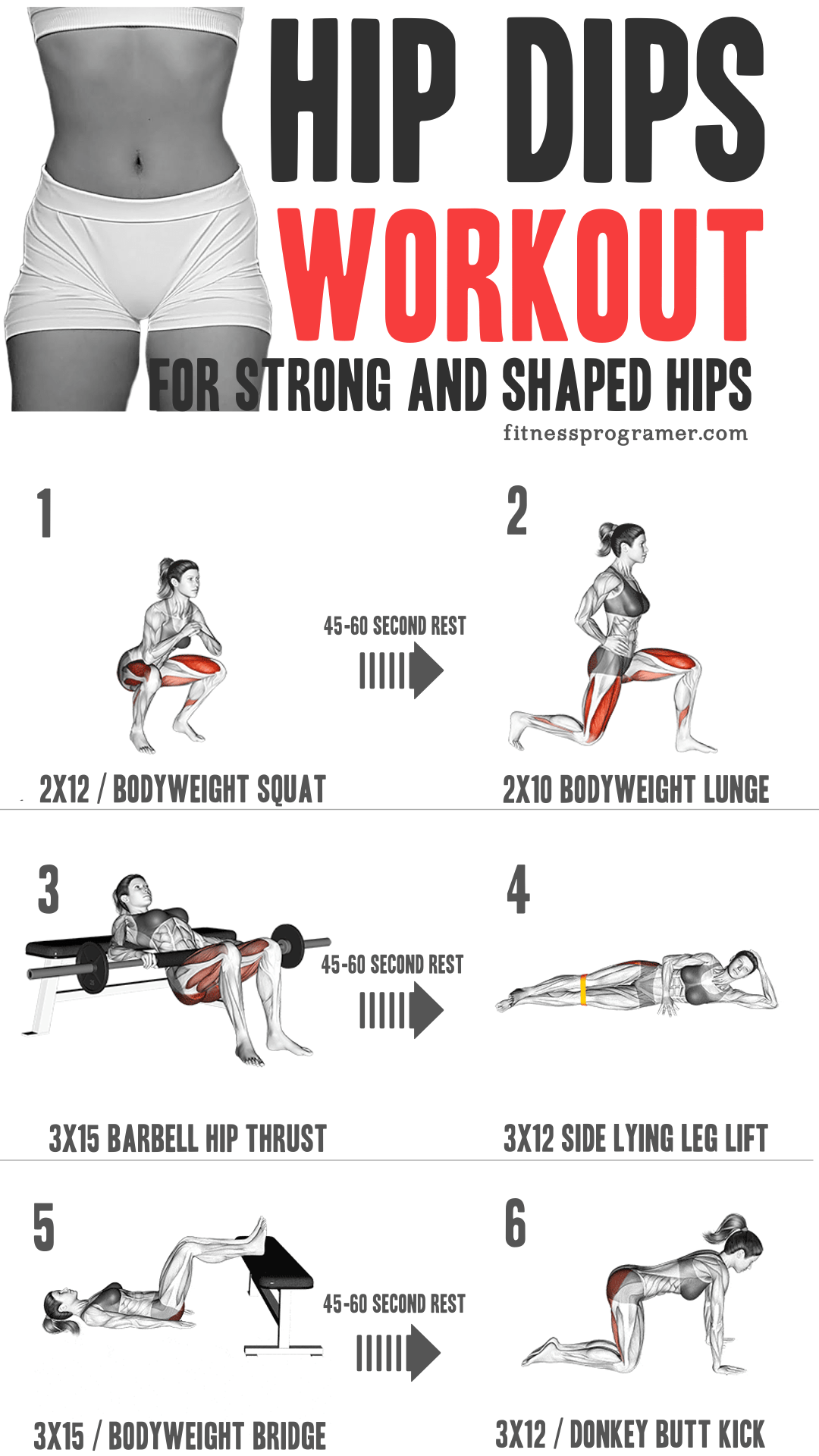Contents
Hip dips exercises can help enhance the muscle tone and definition in the muscles around your hips, particularly the gluteus medius and gluteus minimus. Developing the muscles around the hip area isn’t just about appearance – it’s about creating a body that functions optimally. The intention here is not to erase your body’s natural curves, but rather to embrace your form while enhancing your strength, posture, and overall well-being.
Introduction:
“Hip dips,” also known as “violin hips” or “trochanteric depressions,” refer to the inward curve or depression that some individuals have on the sides of their hips, just below the hip bone and above the thigh. These indentations can be more noticeable on some people due to their bone structure, muscle distribution, and body fat distribution.

Hip dips are a natural and common characteristic of human anatomy, and they are not indicative of any health problems or concerns. They are caused by the underlying structure of the pelvis and the attachment points of various muscles in that area. The prominence of hip dips can vary from person to person based on factors such as genetics, body composition, and overall body shape.
Can You Get Rid Of Hip Dips?
While exercises can certainly help strengthen and tone the muscles around the hip area, they won’t fundamentally change the bone structure or eliminate the natural curves caused by it.
The presence of hip dips is closely related to the bone structure of your hips, which is primarily determined by genetics and not something that can be altered through exercises or lifestyle changes. The term “hip dips” refers to the natural inward curve that occurs between the hip bone (iliac crest) and the top of the thigh bone (trochanter). This curve is a result of the underlying structure of your pelvis and the way your muscles attach to the bones.
Exercises that target the muscles around the hip area can be beneficial in several ways, even though they might not completely eliminate the natural appearance of hip dips. These exercises primarily focus on strengthening the muscles in the glutes, hips, and thighs. Strengthening these muscles can create a more sculpted appearance and contribute to a firmer overall physique. While they may not drastically change your bone structure, they can have positive effects on muscle tone, overall body shape, and confidence.
Hip Dips Exercises to Reduce Appearance
Engaging in these exercises allows you to build strength in muscles that often provide the foundation for movement. The physical empowerment you gain transcends into other areas of your life.
1- Squats:
Squats are a versatile compound exercise that targets the hips, glutes, and thighs. Start with bodyweight squats and progress to using weights as you gain strength.

2- Lunges:
Lunges are excellent for working the muscles around the hips. Forward lunges, reverse lunges, and lateral lunges all engage different muscle fibers in the hip area.

3- Hip Thrusts:
This exercise directly targets the glutes and can be performed using a bench or on the floor. Focus on squeezing your glutes at the top of the movement.

4- Bridges:
Bridges are a great way to activate your glutes and strengthen your lower back. Elevate your feet on a surface for an added challenge.

5- Side-Lying Leg Lifts:
Lie on your side and lift your top leg, keeping it straight. This exercise targets the muscles on the side of your hips.

6- Clamshells:
Another effective exercise for the side hip muscles, clamshells involve lying on your side and opening and closing your legs like a clamshell.

7- Donkey Kicks:
Position yourself on your hands and knees and kick one leg up, keeping it bent at a 90-degree angle. This move effectively engages your glutes.

Hip Dips Workout Routine to Strengthen the Hip Muscles
These beginner-level exercises are effective for building a foundation in your hips, and as you get stronger, you can move on to advanced barbell hip exercises.
Perform this workout routine 3 times a week, allowing at least one day of rest between sessions. Remember to warm up before starting and cool down afterward.
- Squats: 2 sets of 12 reps
- Lunges: 2 sets of 10 reps (each leg)
- Hip Thrusts: 3 sets of 15 reps
- Side-Lying Leg Lifts: 3 sets of 12 reps (each leg)
- Bridges: 3 sets of 15 reps
- Donkey Kicks: 3 sets of 12 reps (each leg)
- Clamshells: 3 sets of 12 reps (each leg)
Bottom Line
It’s important to remember that everyone’s body is unique, and having hip dips is completely normal. Body positivity and self-acceptance are essential, and embracing your body in its natural form is a positive approach to self-image. If someone feels self-conscious about their hip dips, they might consider certain clothing choices or exercises that can help build muscle in the hip and glute area, potentially making the dips less pronounced. However, these changes are ultimately a personal choice and should be made for the right reasons, such as feeling comfortable and confident in one’s own skin.




